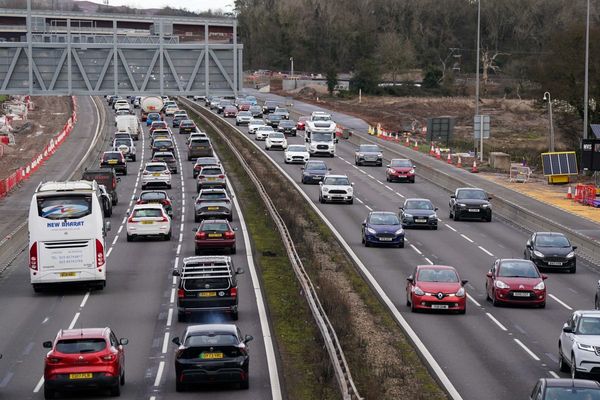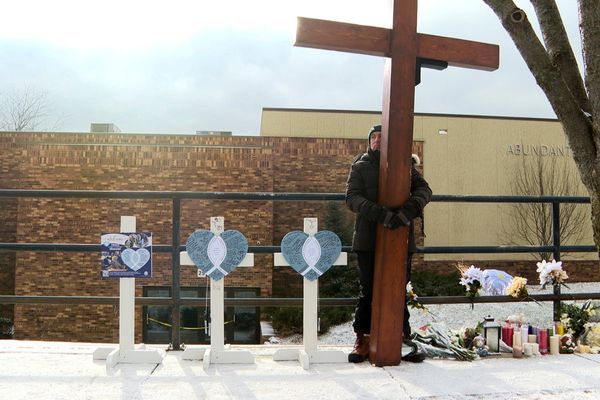
First, we stopped buying small utes. Then we started buying 4×4 utes almost exclusively.
The utes started getting bigger. Then a new kind of ute showed up, one so big they call them trucks.
This is a big problem and I’ve cared about it for a very long time.
I’m delighted to say people are furious about it suddenly, thanks to a stellar data analysis in The Economist. The weekly magazine begins its feature with a story of a Ford Focus being rear-ended by a RAM 3500, one of the biggest trucks on the road. A six-year-old girl in the Ford Focus died, while the driver of the RAM 3500 was physically unharmed.
If you’re going to be hit by another vehicle, you want that other vehicle to be as small as possible. These days, however? Other vehicles usually aren’t small.
The Economist crunched the data on 7.5 million two-vehicle crashes involving 15 million cars. They found big trucks obliterating other road users, time and time again.
“For every life that the heaviest 1% of SUVs and trucks save, there are more than a dozen lives lost in other vehicles,” the piece says.
How you might use this information as a consumer is very different to how you might use it as a policy maker.
Imagine a weekly concert with no rules about what you can bring in. The first Saturday night, a few people bring milk crates to stand on. The next Saturday, lots of people have milk crates. The Saturday after that, people are bringing in step ladders, and a few Saturdays after that, if you go to the concert without a large A-frame ladder, you’re crazy — you won’t see a thing.
Everybody would see better if big ladders were banned. But everyone has to spend money on these crazy contraptions just for a chance to see.
This is an example of an arms race. Another example is two countries, each investing millions and billions expanding their navy or air force to deter the other from attacking. Both would be better off with an effective treaty, rather than devoting so much of their income to defence. But each is forced by the actions of the other to spend money, running to stand still.
To those of us versed in game theory, an arms race is a catastrophe. A way of making the world worse for absolutely no gain. More than mere waste — abject destruction. The term is not always well understood, though.
“It’s an arms race!” I say, wide-eyed and nodding in anticipation.
The other person looks blankly at me.
Vehicle size increase is an arms race and the price we pay is death.
The top-selling vehicle in Australia this year is the Ford Ranger, and the year before that it was the Ford Ranger too. Sedans haven’t been in the top-sellers list for years now. In another few years the remaining sedans from the heyday of sedan sales will all be retired, and any remaining people driving small-medium cars will be at big risk.
Those ANCAP ratings do not reveal this. ANCAP gives out a 5-star rating to cars depending on how they perform in their class. They give small cars 5-star ratings because they don’t want to encourage people into bigger cars. I see the logic but it helps obscure an important fact about our fleet: while some cars are safer than others, some cars are also more dangerous than others.
I was driving in Melbourne the other day and out of nowhere, all the traffic in my lane stopped. About five seconds later I got rear-ended, hard, by another driver who wasn’t looking. Luckily for me he was driving a small, sporty Mercedes rather than a huge ute. While my car was written off, I wasn’t hurt. If he’d been a tradie with tattoos instead of an old bloke with a poodle, I might be in a neck brace. (The poodle got a shock when his airbags went off but was fine).
Some of the leading research on how dangerous cars are to others is being done right here in Australia, by researchers at Monash University. They’ve been doing a version of what The Economist did, and doing it for a very long time. They call their outcome “aggressivity” and they find the most dangerous cars for other occupants are big SUVs.
Now, the Monash researchers have also controlled for one of the biases The Economist researchers did not, which is that not all crashes are multiple vehicle crashes. If you smack into a tree, you want to be in a big vehicle. The sweet spot for reducing death to others and reducing risk to yourself appears to be found in the medium SUV. So says the numbers. So it was pleasing to see the RAV 4 rising to the top seller spot in the month of August.
But that is probably temporary. The unbeatable logic of an arms race says we will all be driving much bigger cars before long.
I’m very impressed by the power of the free market. Often what you want to do is step back and let that power roar. But when what the market is achieving is detrimental, we need to check that power. Because if we don’t, then the relentless logic of size expansion will continue unchecked, and a car the size of a Mazda CX-5 will begin to look as quaint as a Mini Minor.
The big American cars are the ones we should target first. The Economist finds these heaviest few vehicles do the worst damage:
Vehicles in the top 10% of our sample — those weighing at least 5,000lb [2,268kg] — are involved in roughly 26 deaths per 10,000 crashes, on average, including 5.9 in their own car and 20.2 in partner vehicles. For vehicles in the next-heaviest 10% of our sample — those weighing between 4,500lb [2,041kg] and 5,000lb — the equivalent figures are 5.4 and 10.3 deaths per 10,000 crashes. A back-of-the-envelope estimate suggests that if the heaviest tenth of vehicles in America’s fleet were downsized to this lighter weight class, road fatalities in multi-car crashes — which totaled 19,081 in 2023 — could be reduced by 12%, or 2,300, without sacrificing the safety of any cars involved.
The absolute worst thing about all this is we are actually subsidising these big utes with a tax cut. The ATO treats any commercial vehicle as a business input and exempts it from luxury tax. So if you’re pricing up vehicles, a large car and a big ute may look comparably priced even if the big ute has more features. The tax break is an extra nudge in the direction of massive utes, and it’s the last thing we need. Getting rid of it would save lives.
Do you have a giant car? Why? Let us know your thoughts by writing to letters@crikey.com.au. Please include your full name to be considered for publication. We reserve the right to edit for length and clarity.







